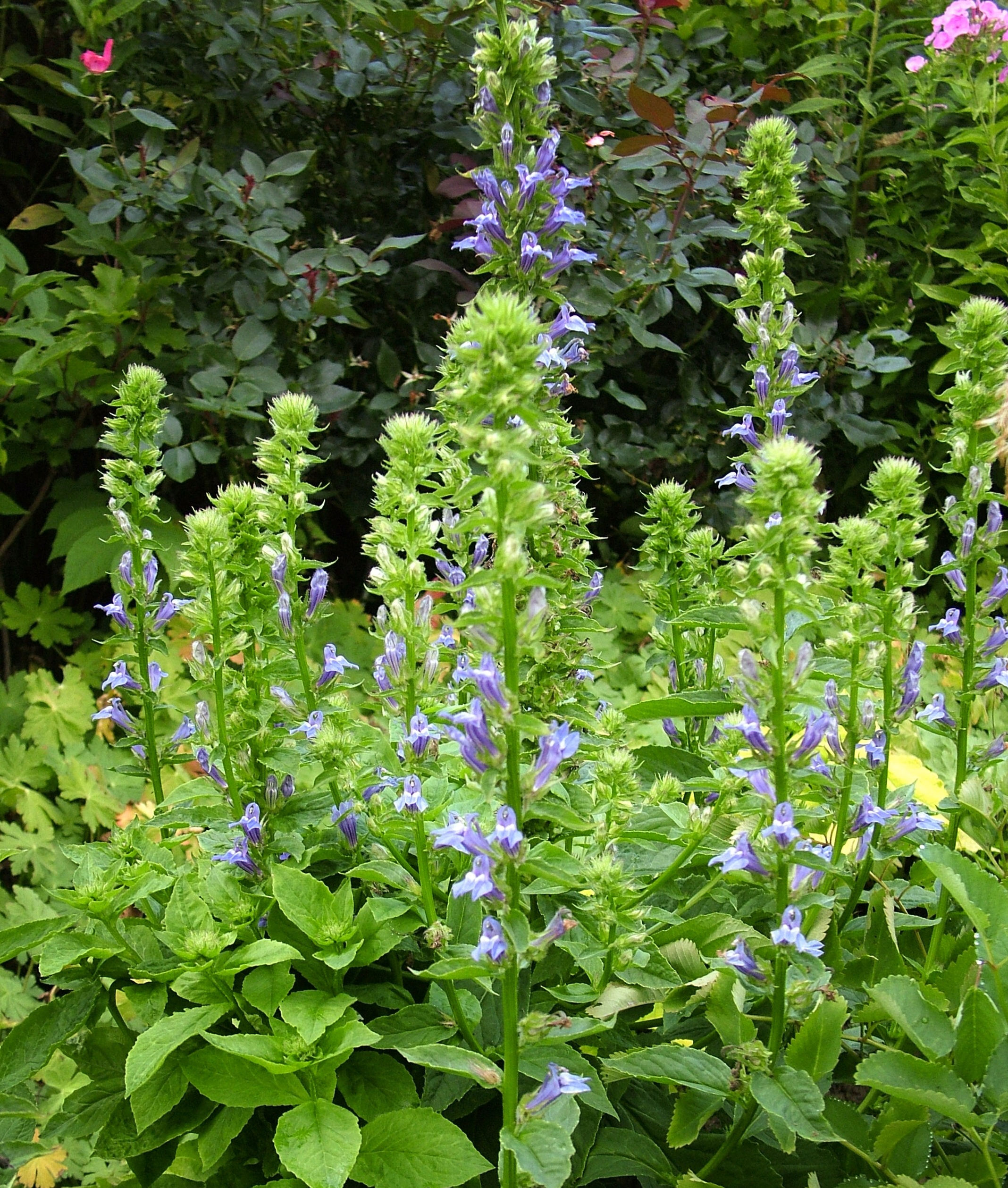Great blue lobelia grows 1-4 feet high and forms a flower spike covered in bright blue flowers in late summer. It’s an excellent upright plant for medium-to-wet soils in full sun or light shade. The largest of the Lobelia species, it naturalizes easily through reseeding and provides colorful blooms from July into fall, providing important nectar for bees, butterflies, and hummingbirds. Long-tongued bees such as bumble bees are especially drawn to lobelia’s tubular flowers. When bees land on the prominent lower lip, the stamens overhead brush the bees’ backs with pollen.
Native Americans used the plant in religious ceremonies and also medicinally to treat body aches, induce vomiting, cure tobacco and alcohol addictions, and to cause people to fall in love. In later times, New Hampshire farmer Samuel Thomson, an unorthodox herbal practitioner, widely used and increased the popularity of lobelia. Interestingly, as a child, he had great fun giving it to other children to watch them vomit. The unfortunate species name, siphilitica, came from its historical use in the treatment of venereal disease.
Native habitats include moist prairies and soggy meadows, low areas along rivers and ponds, woodland borders and low woodlands, swamps, and ditches. Great blue lobelia is ideal for moist areas such as rain gardens or banks of ponds and streams.
Plant Characteristics:
Reaches 1-4’ tall and 1 ½’ wide.
Grows in full sun to light shade.
Prefers moist, rich, well-drained soils but adapts to clay and other soils.
Bell-shaped, two-lipped, blue-violet flowers are about 1” long and angled upward in dense clusters on unbranched stems. A pair of small white patches appears at the base of the flowers, which bloom July-September and are followed by capsules containing small seeds distributed by wind or water.
Elliptical dark-green leaves with serrated edges are covered sparsely in short hairs and are up to 5” long.
Wildlife Value:
A host plant for 5 species of Lepidoptera larvae in central Ohio, including the pink-washed looper (pictured here), greater black-letter dart, and red-banded leafroller moths. Nectar and pollen attract halictid and other bees, hummingbirds, and large butterflies.
Medicinal, Edible, and Other Uses:
It is not advised to self-medicate with lobelia as nausea, vomiting, and even death may occur. Lobelia stimulates the respiratory center of the brain and has been used for respiratory problems. It also acts as an anti-spasmodic. Lobeline, a chemical derived from lobelia, is being studied for possible use in treating depression and acute lung injury.
top of page
$8.00Price
Excluding Sales Tax
Out of Stock
bottom of page

